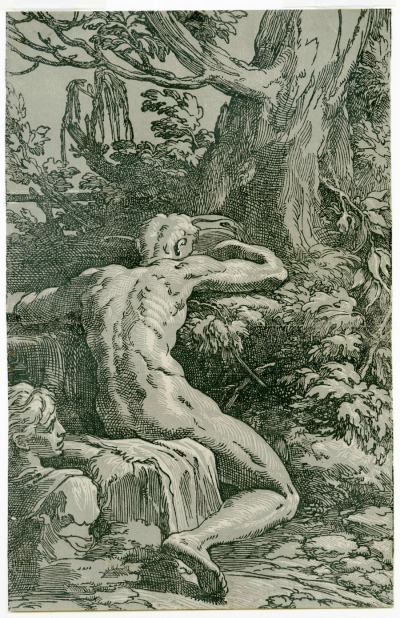Narcissus at the Fountain
The musculature of Narcissus reflects the Renaissance culture of a fully empowered, virile image of masculinity within art. Although the portrayal of the subject reinforces these widely held notions, the position of the body of Narcissus can be considered passive in the turning away of the face from the viewer. Passivity was generally associated with the role of the female, and was a major aspect of how femininity was constructed in Renaissance Italy. The inclusion of elements associated with both masculinity and femininity stands in opposition to the male bias that was so pervasive in Renaissance art. In the story of Narcissus, he is cursed to fall deeply in love with his own reflection, and he eventually dies because he cannot take his eyes away from the pool in which he sees his face. Narcissus's story warns us of the potential danger that our desires can hold and reminds us that self-obsession is a dangerous habit to get into.

